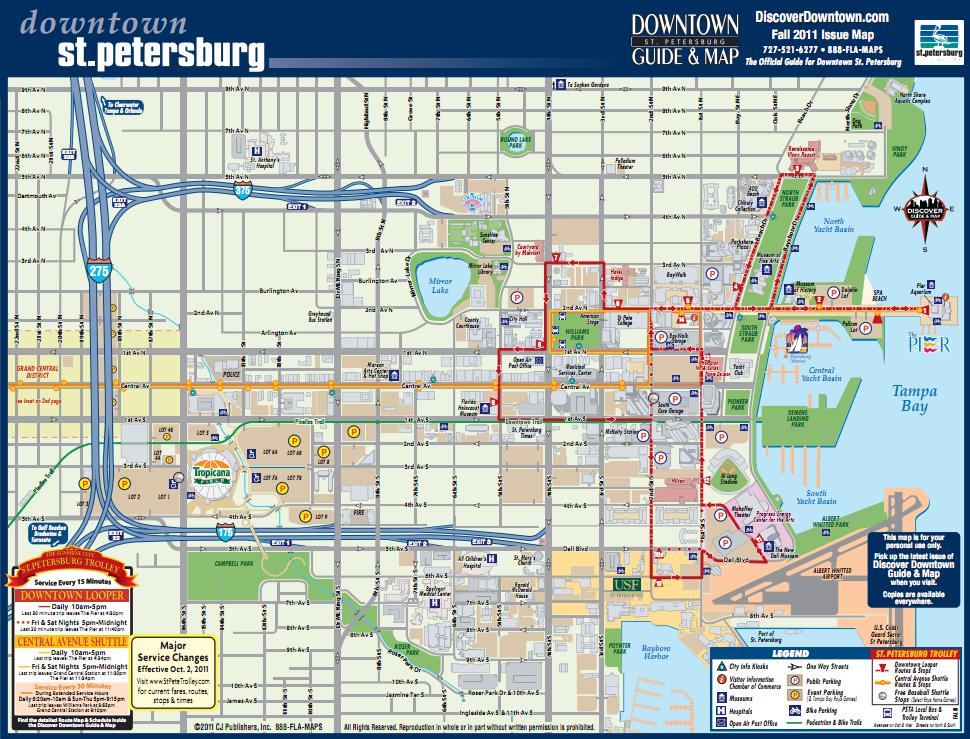This past Labor Day weekend I was down in St. Petersburg, Florida. I noticed that the highway network in downtown St. Petersburg includes two very, very short interstates known as I-175 and I-375. These interstates are much more like long exit ramps off of I-275, the highway which circles the Tampa Bay region. The interstates are so short that they are given local street names: South Bay Drive and North Bay Drive, respectively. You can see in the map below how short they are in relation to the local street network. It got me wondering, how short do interstates get. Are these the shortest?

I went to my favorite interstate resource, and one I’ve enjoyed reading since 2004: 3-digit interstate highways. This website is a great resource on the loops, spurs, and branches of highways that serve specific needs for urban areas and regions.
On the site, the author lists out the shortest 3-digit interstate highways. I’ve copied the author’s table below, and it turns out there are many shorter interstates than the ones in St. Pete!
- 0.70 miles – I-878, New York. Not signed as an interstate.
- 0.83 miles – I-315, Montana. Not signed as an interstate.
- 1.06 miles – I-375, Michigan. The nation’s (current) shortest signed interstate.
- 1.09 miles – I-180, Wyoming.
- 1.12 miles – I-895, New York.
- 1.20 miles – I-194, North Dakota.
- 1.21 miles – I-587, New York.
- 1.29 miles – I-395, Florida.
- 1.34 miles – I-375, Florida.
- 1.39 miles – I-115, Montana.
- 1.40 miles – I-345, Texas.
- 1.44 miles – I-175, Florida.
- 1.49 miles – I-189, Vermont.
- 1.50 miles – I-705, Washington State.
- 1.57 miles – I-579, Pennsylvania.
- 1.67 miles – I-381, Virginia.
- 1.98 miles – I-395, Maryland.
According to the website’s author, these two interstates were built as spurs from I-275 to help rejuvenate the downtown St. Petersburg area. These short little offshoots from the region’s beltway, however, are just as likely to do the opposite though – take residents from downtown away as quick as possible to jobs elsewhere in the region. The reason they received interstate status, instead of just state routes, is there was excess interstate funding around when the two highways were built.
The short interstates all share similarly fascinating stories, where the interstate wasn’t precisely planned, but it ended up getting status and being built. The need for a funding source often causes roadways that should be designated in a different fashion (US Highway or state road) to get bumped up to the blue shield! In an era where we are concerned about earmarks and pork barrel spending, the sign on the roadway may not be the biggest issue at hand. Still, often it is the political will of a local jurisdiction that swings an interstate highway their way – and the benefits of having the highest designation on a map certainly are reaped.
Image source: Discover Downtown St. Petersburg

It seems as though these could be considered collector-distributor roads, which often get interstate tagged along with the main highway.
I guess the question is not why they were given interstate status, but why they were given a new number.